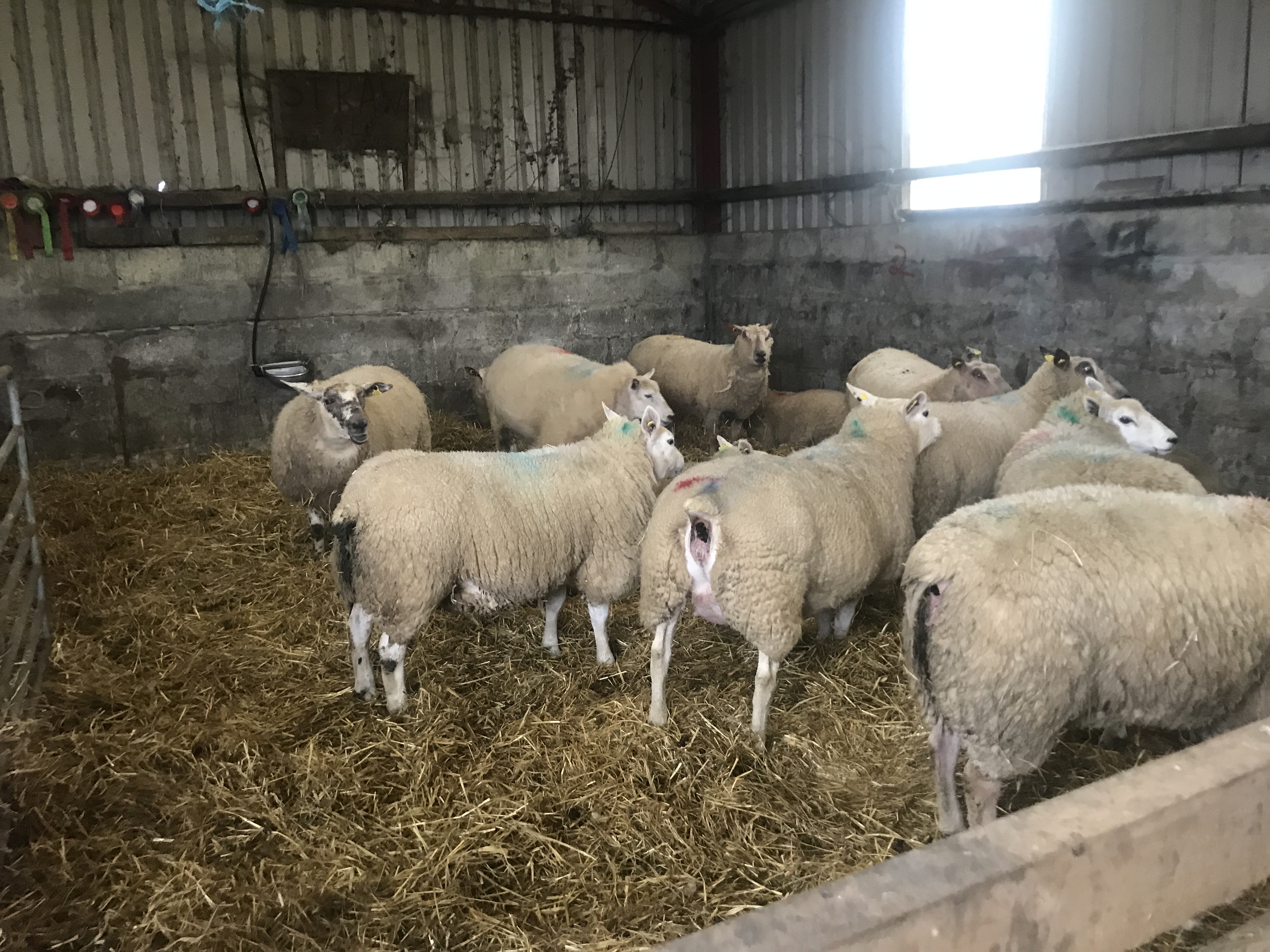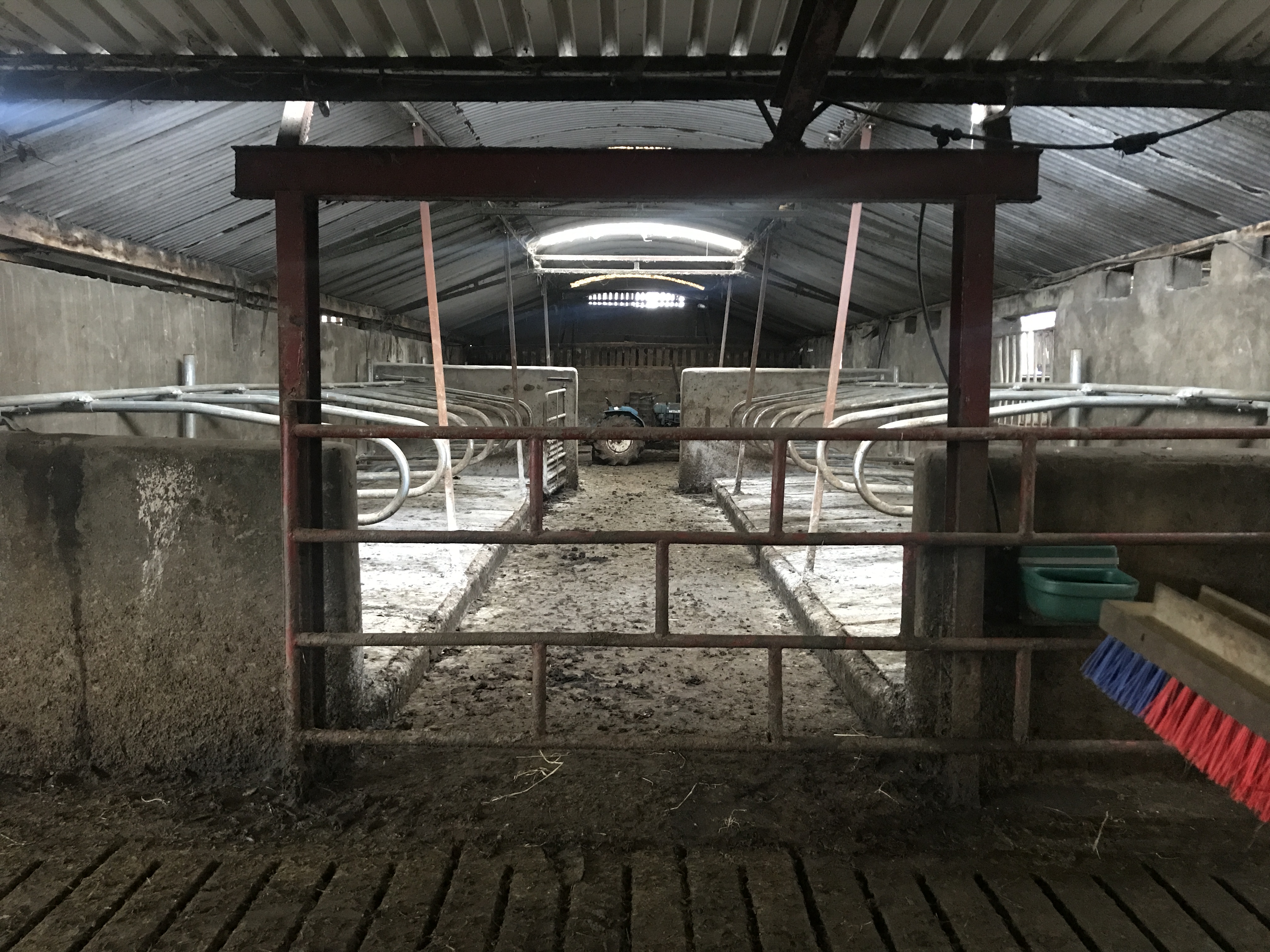For this week’s Dairy Focus, Agriland made the trip down to the Model county to visit the Devereux family on their dairy farm near New Ross.
The Co. Wexford family are new entrants to dairy farming, having had their first heifers calve-down in 2022.
The Devereux family are now milking 80 cows, with a plan to increase to about 90 cows.
They had originally planned to start milk production in 2021, but due to planning issues that was delayed.
Because of this delay, the Devereux family leased their 40 first-calvers to a local dairy farmer and this year, calved down 40 second-calvers and 40 first calvers.

Before switching to dairying, James and Maura were working full-time. James wanted to go back to farming full-time, and decided that dairying was the only way for him.
Sucklers and sheep had been the enterprises on the farm beforehand, but James said that he could not see a future in sucklers or dry stock.
With that said, 40 pedigree Charollais and Texel ewes remain on the farm, with the lambing season just getting underway when Agriland visited.
Dairy Focus
The Devereux family had milked cows years ago, but James’ father had to stop due to health reasons.
The family’s return to dairy farming required a lot of planning, the construction of a milking parlour and a decision regarding a production system.
Commenting on this, James said: “We would have looked at different farm systems and different parlours.
“I kind of bamboozled myself, I went to a few farms and said I would go that way – then go to another and change my mind.
“The more places I went to, the more systems I saw, which helped me to make decisions for the farm here.
“We finally made up a plan after taking bits and pieces from other farms and decided on the dairy system we were going to focus on.”
Continuing, he said: “One thing I took home with me was the flow channel on the exit race from the parlour.
“I wasn’t going to put one in, but after seeing them on a number of farms I decided that I would and it has been massive time saver.”
Farm infrastructure
A new milking parlour was constructed on the farm, with the existing cubicles upgraded and a further 20 added.
“I knew from day one where the parlour was going, I was advised to do it differently but I knew myself this was the best option,” James said.
“We built a new milking parlour. We ended up going with a Fullwood Packo. They are not that popular around here, but I just liked the parlour.
“I liked the guys I was dealing with; Pat Murphy from PM electrical installed the parlour, did all the electrical work and the plumbing. The one guy did the whole lot, so if there is a problem with anything I just have to call him.”
Continuing, James said: “We constructed another tank under the collecting yard and a row of 20 outdoor cubicles – the plan will be to cover them down the line.
“There were 60 existing cubicles, we just updated them a bit.
“The grazing infrastructure was quite good, we added about 700m of a roadway.
“We updated all the troughs, and we already had a paddock system so it was more tidying-up than anything.”
Cow selection
When asked about the cow type they wanted to milk on the farm, James said: “We have gone for a British Friesian-cross Holstein-type cow. We got a few cross-bred heifers as well, just to see what they are like.
“So far the cross-bred heifers are okay, calves might be an issue to get rid of. We didn’t really go mad on figures when we were picking heifers. I bought them all from local herds I knew through work.
“I knew the herds, I knew they were coming from good stock and they were the kind of animal I was looking for.
“We’re hoping to end up with a 6,000-6,500L cow, producing between 500-550kg of milk solids.”
Commenting on how the conversion to dairying has gone and how he has found the transition, James said: “It was tough going for the first month; we still have no ESB, the parlour is working off a generator.
“We had some small niggling issues, but now I know how everything works I can fix them myself. Running the parlour off the generator is probably not helping.
“Working with dairy cows compared suckler cows is also a massive change. The cows are so quiet and easy to handle, they’re real pets.
“I cannot get over how quiet they are, once they get into a routine and they know where they are going they can go by themselves.
“Dairy cows are just so much easier to handle and manage at calving – the kids are able to be more involved and help milk.”

Grass
The focus on this dairy farm will be spring milk, with the farm being dry, allowing for early turnout of stock.
The home block will be used for the milking cows, while an outblock will be used for silage and heifer rearing.
When asked about the biggest challenge he has faced so far, James said: “The grassland management has been a massive change for me, I was not measuring grass before we switched.
“My biggest fear at the minute is keeping grass in front of the cows.
“I would not have been very good at grassland management, I was just okay.
“I knew what I was doing with suckler cows and dry stock, but just switching to dairy farming, the management and focus on grass is just completely different – it is my biggest work at the minute.”
Continuing, he said: “A neighbour of ours has been giving me a hand, I am starting to get it – but it is still a work in progress.
“The more I talk to other farmers the more information and knowledge you get and learn.
“You can go to all these walks, but when you talk to other farmers is when you really get a handle on it.”
Input costs
Agriland asked James how the increase in input costs this year has affected his plans. He said: “I have not spared anything fertiliser or meal wise. I was going to cut back, but I was afraid that I could hit a wall somewhere.
“The cows are on 5kg of meal at the minute and the milking platform has gotten 70 units of nitrogen.
“I know it is expensive, but I didn’t want to run out of grass or have cows in low body condition score (BCS) coming into the breeding season.
“Once I know there is grass ahead of them and they’re in a good condition going into breeding, I will be reducing the meal.
“I’m working with first and second-calvers so they need that little bit more minding.”
Ultimate goal
Agriland then asked James about his ultimate goal, when converting to dairying.
“The ultimate goal was to get to a level where I can go full-time farming and it be viable for one of the kids in the future,” he said.
“All four of them have a great interest in the farm; they’re still young but it will be there for one of them if they want it.
“Sucklers were not going to stick, the reason we have made the switch has been for the kids.
“Dairying just suits family life better. Before I was farming in the morning before work, then going to work and back farming in the evening and weekends.
“Now I start at 6:00a.m, milk the cows and can do the school run. I’m finished before six in the evening and can go to the training with the kids or matches.
“I was 15 years working until 9-9:30p.m at night and I was sick of it. I now get to see the kids more and I bring them to the farm with me.”








